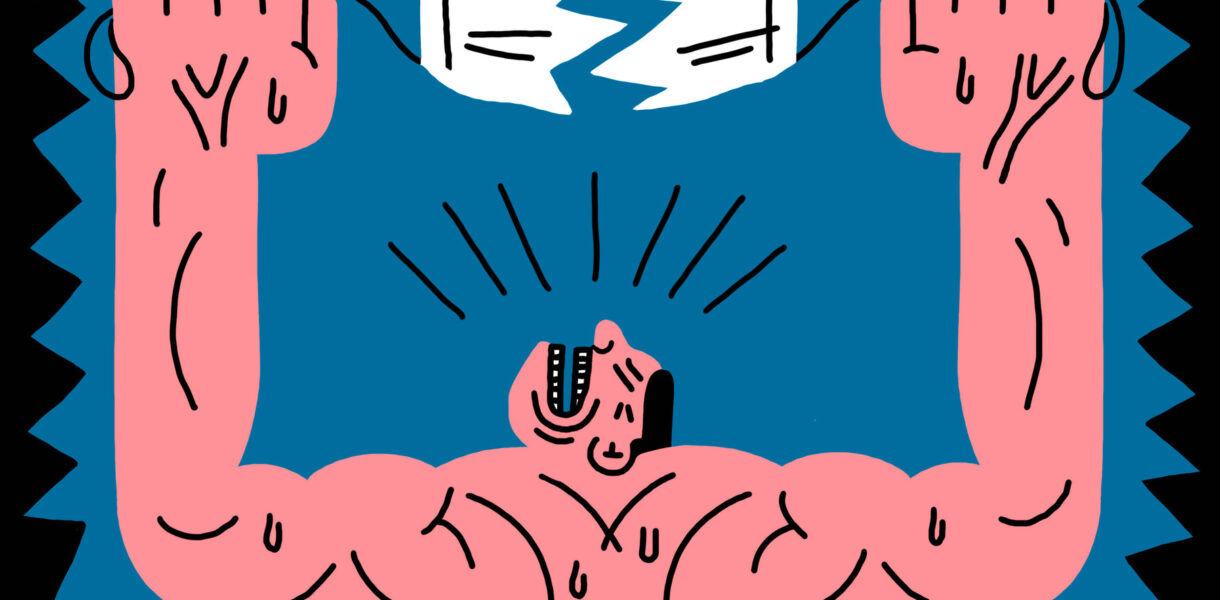
The concept of the nation-state, its establishment, and accommodation of its racial and ethnical diversity; in addition, keeping the law and order and furthermore the invasions, led to the rise of nationalist sentiments– nationalism– and simultaneously militarism¹. The national struggle complemented with the personification of the nation as women, with Masculine and patriarchal privileges and sexualised militarism gives rise to a masculine nationalism. The paper attempts to explore the interrelation of national politics, nationalism and militarism, with certain societal traditions which refurbish the aforementioned relation. The paper also attempts to establish how militarism i.e. glorification of the military also leads to misogyny and sexism.
Before dwelling into the interrelations, Lets understand the term ‘masculinity²’, which serves as an operative term throughout the paper, in isolation. Mosse notes that the nationalist movement broke and evolved at the same time of modern masculinity. From initial invasions, world wars to even the political fields, the idea of leadership and dominance has been masculine. The stereotypical feminine attributes– weak, sensitive, empathic etc. — aren’t suitable for a leader or a nation. Recall Theodore Roosevelt– 26th President of the United States of America– never appealed to the masses at the onset of his political career because he was regarded as a feminine-man. His weak side was showcased through the nature of his clothing, his sickliness, and high pitch voice, all of which were associated with homosexuality and thus a lack of manliness that was not fit for the nation. His colleagues mentioned his personal discourses on his way of being and how he transformed himself to attain success in politics. Hence, the non-masculine attributions become non-nation or non-leader attributes too.
Firstly, if we trace the history, coming together as well as the nation³ formation and sustentation requires armed conflicts. Enloe argues, ‘when a nationalist movement becomes militarized . . . male privilege in the community usually becomes more entrenched’. The implication here is to the masculine nature of the military and warfare. There are certain institutional activities which refrains femininity to ‘directly’ participate in a military environment. The indirect involvement is talked about later in the paper. Hence, the nation, militarism, and muscular nationalism go hand-in-hand.
Also, the status of conquered nations can become a causality dilemma: the nation was “conquered because they were effeminate or they are seen as effeminate because they were conquered.” In defeat, they are considered militaristically unskilled, not aggressive, and thus not muscular or masculine. In order for a nation to be considered “stable”, it must possess the male-gendered characteristics of virility, as opposed to the stereotypically female characteristics of subservience and dependency. This thought in itself is casual sexism and misogynistic.
Secondly, if the national struggle isn’t militarized instead functions on resistance– both passive and active– then women are ‘allowed’ to participate in the struggle. But after the struggle, when freedom is achieved, then the ideals of feminism are balks. A simple explanation to this could be, the task of development of the nation and then nationalism demands the creations of the nation’s past and present. The past and present then incur traditions, culture, and customs of the nation. These above-mentioned practices emphasise the idea of ‘unity’ and ‘otherness’. The tradition, often patriarchal, legitimizes the basis of nation formation simultaneously reinforces the idea of masculine privilege which strongly weaves together the notion of nation, nationalism and masculinity.
Cynthia Enloe describes the ‘waiting’ strategy by the anti-masculine feminists as dangerous. She argues and writes:
“Every time women succumb to the pressures to hold their tongue about problems they are having with men in nationalist organizations, nationalism becomes that much more masculinized. . . Women who have called for more genuine equality between the sexes – in the [nationalist] movement, in the home – have been told that now is not the time, the nation is too fragile, the enemy is too near. Women must be patient, they must wait until the nationalist goal is achieved, and then relations between women and men can be addressed. “Not now, later”, is the advice that rings in the ears of many nationalist women”
Thirdly, there is no universal definition for masculinity but there are certain traits which are ubiquitous to men. Due to imperialism and colonization, we, Indians, practice hegemonic masculinity. We adhere by Western principles of masculinity. These trends of masculinity which are believed to define the ‘man’ in Indian society, without a doubt, are more hegemonic then innate or cultural.
In India, dominance of spiritual and mythological scriptures, gender stereotypes have always persisted. The infamous gender-caste hierarchy remained a crucial reason for the determination of the societal roles everyone is subjected to play. This division of roles is reflected in the political struggle for freedom. The forerunners were men with masculine attributions. Hence, the agendas and deliberation of the national struggle and nation-state formation too were masculine, which leaves significant less space on the plate for feminine agendas. Therefore, the masculine way of nationalism becomes the nationalism which would be practiced nationwide.
In India, the masculinity and nationalism, with militarism, are complimented with culture and mythology (spiritual) to make it seem perpetual and god written.
Finally, women occupy a distinct, symbolic role in nationalist culture, discourse and collective action, a role that reflects a masculinist definition of femininity and of women’s proper place in the nation. The identified ways in which women have tended to participate in ethnic, national, and state processes and practices: (a) as biological producers of members of ethnic collectivities; (b) as reproducers of the [normative] boundaries of ethnic/national groups [by enacting proper feminine behavior]; (c) as participating centrally in the ideological reproduction of the collectivity and as transmitters of its culture; (d) as signifiers of ethnic/national differences; and (e) as participants in national, economic, political and military struggles. (ANTHIAS)The above-mentioned participation is in the manner of preference of the masculine men.
The military and warfare reflection of masculinity and femininity– physical and sexual dominance of one on other– is quite derogatory. George Mosse in his book ‘Nationalism and Sexuality: Respectability and Abnormal Sexuality in Modern Europe (1985)’ attempts to capture and describes portrayals of women on the battlefield as victims of sexual aggression or exploitation along the lines depicted above. He notes, however, that ‘women haunted soldiers’ dreams and fantasies’ (p. 127) in other roles as well, either as ‘objects of sexual desire or as pure, self-sacrificing Madonnas, in other words, the held prostitute or the battle held nurse’ (p. 128). The irony lies in the characterization of the ‘enemy’ women. Since, they are more uniformly characterized as sexually promiscuous and available: sluts, whores, or legitimate targets of rape. The accounts of, virtually all, wars contain references to and discussions of the rape, sexual enslavement, or sexual Masculinity and nationalism, exploitation of women by not only individual or small groups of men, but by army high commands and as part of state-run national policies.
But the unjust treatment of women during and after the war is inevitable, probably before the war also. In the light of war, the question is who counts as human? Whose life counts? As Theweleit summarizes: ‘Woman is an infinite untrodden territory of desire which at every stage of historical de-territorialization, men in search of material for utopias have inundated with their desires.’ Evidently because of the above mentioned treatment and exploitations women resist from participating directly or indirectly in military warfare, which is justified.
To conclude, it is crucial to the understanding of patriarchy that men have always been interested in controlling the sex and sexuality of the women. Also, the symbolic adherence of the nation to women makes it more personal. Therefore, the woman is now representing the family’s honor as well as the nation’s honor. While traditionalist men may be defenders of the family and the nation, women are thought by traditionalists to embody family and national honor; hence, women’s shame is the family’s shame, the nation’s shame, the man’s shame. With history, gender roles and discrimination the society have molded itself into the masculine nationalism. The representation of the nation as motherland and the masculine military as its protector breeds the above explored nationalism. The innate sexism or the casual conversations as well as the institutional practices and activities saliently promote masculine privilege in the society.
The feminists had been slow to recognize ‘nationalism’ as a gender issue. They have even been slow in understanding that the nation and state as concepts were masculine manifestations, which slowly established femininity as a supporting actor.
About the Author
If you don’t find him reading a book then, you’d find him watching a film!
Footnotes:
- Militarism imply the glorification of the military and of the ideals of a professional military class and the “predominance of the armed forces in the administration or policy of the state.”
-
Masculine: Set of attributes, behaviors, and roles associated with boys and men Traits traditionally viewed as masculine in Western society include strength, courage, independence, violence, and assertiveness.
- A nation state (or nation-state) is a state in which the great majority shares the same culture and is conscious of it. The nation state is an ideal in which cultural boundaries match up with political ones. According to one definition, “a nation state is a sovereign state of which most of its subjects are united also by factors which define a nation such as language or common descent.
Bibliography
ANTHIAS, NIRA YUVAL-DAVIS and FLOYA. Woman- Nation-State. London: Macmillan, 1989.
ENLOE, CYNTHIA. Bananas, Beaches, and Bases: Making Feminist Sense of Inter- national Politics. Berkeley: University of Califorina press, 1990.
Mosse, George L. Fallen Soldiers: Reshaping the Memory of the World Wars. New York: Oxford University Press, 1990.
—. Nationalism and Sexuality: Middle-Class Morality and Sexual Norms in Modern Europe. Madison: University of Wisconsin Press, 1985.
WIKIPEDIA





Great read, now following!
Article writing is also a fun, if you know after that you can write or else it is complicated to write.
I visit daily some web sites and information sites to read articles,
however this weblog provides quality based writing.
Hello, of course this post is in fact fastidious and I have learned lot of things from it on the topic of blogging.
thanks.